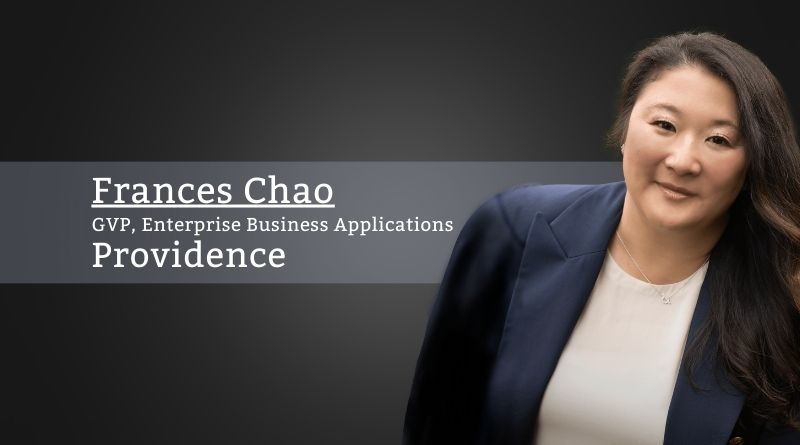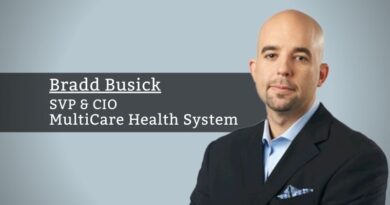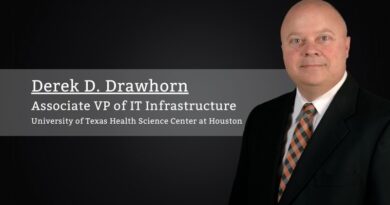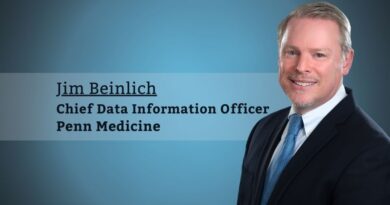Resilience Through Crises: Providence’s Journey to an Integrated ERP
By Frances Chao, GVP, Enterprise Business Applications, Providence
Non-clinical technology in healthcare has been decades behind other industries. Providence—a not-for-profit health system with over 117,000 caregivers (employees) across 51 hospitals and 1,000 clinics—was no exception. Providence has been on a four-year journey to transform business processes and technologies. In July 2022, we achieved a monumental milestone implementing an enterprise-wide integrated ERP cloud platform. Since go-live, others have been reaching out to learn from our journey. With that, I’d like to share our story.
Overview of our journey
Providence’s technology landscape previously consisted of a dozen disparate, outdated systems – a result from decades of mergers and acquisitions. There was a lot of variation with our processes and policies, and overall, a poor experience for our caregivers. Activities were manual, with limited controls, cumbersome to get insight into spend, and in some cases, no automated workflow in place hindering productivity. Providence needed solutions that could scale as we grew and aligned with the evolving complexities of healthcare (e.g., unions, compliance/regulatory requirements). We needed to improve our caregivers’ experience, so they could focus on providing quality patient care.
With these needs, we replaced our legacy HR, Finance and Supply Chain systems with an integrated ERP cloud solution and streamlined processes and policies. Providence is now the largest healthcare system on a single cloud ERP instance delivered at 2-3 times the typical scope implemented in a single go-live. Adopting a cloud-based ERP enabled Providence to accelerate and reduce our deployment time by 25-50% compared to other large-scale ERP implementations. CIO/EVP B.J. Moore states, “This program has propelled us forward in the healthcare industry, eliminated our technical debt and aligns with our strategy to simplify our processes and technology, modernize through a cloud SaaS solution and innovate with AI. Our caregivers are working in one seamless digital platform accessible from anywhere, anytime from any device.” In addition, Providence is now an industry leader with one cloud ERP and one EHR where we’ve laid the foundation to rapidly adopt changes and innovation and are well-positioned to influence how the industry maximizes the existing capabilities of RPA, AI and ML.
Providence is now an industry leader with one cloud ERP and one EHR where we’ve laid the foundation to rapidly adopt changes and innovation and are well-positioned to influence how the industry maximizes the existing capabilities of RPA, AI and ML.
Providence demonstrated resilience throughout this initiative. This was one of the most complicated and challenging initiatives implemented at Providence. Also, it was deployed during one of the most turbulent times in history for healthcare with a trifecta of crises – the COVID-19 pandemic, financial difficulties due to inflation, low volumes and increased labor and supply costs, and global workforce shortage. Despite these challenges, we remained focused on delivering the complex program by finding creative solutions to keep the program moving forward, while 100% remote and reallocating 90% of business resources to support COVID-19 response and recovery. The 500+ program team responded rapidly to evolving business needs due to the pandemic. For example, we pivoted quickly to design changes with hiring processes (e.g., updating COVID-19 policies and vaccination requirements, and accelerating new caregiver onboarding) – expediting deployment of changes like these were essential for the program’s success.
While we focused on pushing the program forward, Providence responded as a unified organization and continued delivering high-quality care to our patients. And continuing the 165-year legacy of investing in communities, Providence contributed $2.1 billion in 2022 to the communities we serve.
Key learnings from our journey
PEOPLE – Gain commitment from executive leadership and business stakeholders. Providence executives, CIO/EVP B.J. Moore, CFO Greg Hoffman, Chief People Officer Greg Till and COO Erik Wexler, had the foresight that investment to simplify processes and technology was critical for our future and would better prepare us for major market disruptions. I’m grateful for their leadership towards making the vision of an integrated ERP solution a reality.
Do not underestimate change management and implement a comprehensive plan across all levels and throughout all phases of the program. Establish a change agent network and listen and respond to their feedback – input on the user experience is invaluable. Facilitate end-to-end process training and leverage embedded learning tools to accelerate adoption. Communicate early and often that go-live will not be perfect, plan for surprises and unplanned issues.
Proactively manage resource burnout and engagement. This is not a sprint, but a marathon. It’s a long, emotionally-taxing journey. Focus on how to keep people motivated and engaged, including reinforcement of why we are doing this.
PROCESS – Set the vision that this is a transformation of business processes and technology. Seize the opportunity to rationalize and transform processes and policies. Develop a strong partnership between IT and business – my deepest appreciation for the leadership of SVP of HR Ops/Payroll Lynne Farlow, VP of Transformation Todd Perry, and VP of Supply Chain Ehab Sahawneh. Our partnership was critical for go-live and continues with our business transformation efforts.
Have a strong post go-live support process in place. Develop operational contingency plans and quick escalation paths to minimize impact on operations.
TECHNOLOGY – Acknowledge go-live will never be perfect. Even with thorough testing, issues will occur at go-live. Strive to find the right balance between going live with the appropriate support structure for quick issue resolution and delays to the timeline to refine the system.
Focus on both go-live and post-stabilization period. Align with business stakeholders and vendors on an operating model tailored for cloud solutions.
Gaurav Dhiman, VP of IT applications, on my team emphasizes, “With a transition to a cloud ERP, it is crucial to strike a proper balance between customization and out-of-box functionality. Too much variation can lead to increased maintenance and hinders scalability and innovation.”
What’s next with our journey
Our focus for the future is on design optimization and driving value through innovation with RPA, AI and ML. We’re continuing to partner with our vendors, providing our expertise in healthcare to help shape vendors’ future product roadmaps. We will continue looking for automation opportunities to advance our operational metrics.
Lastly, I’m reminded of the resilience of our founding Sisters of Providence. It is this same resilience that helped deliver this huge accomplishment for Providence during one of the most challenging times in history for healthcare.



